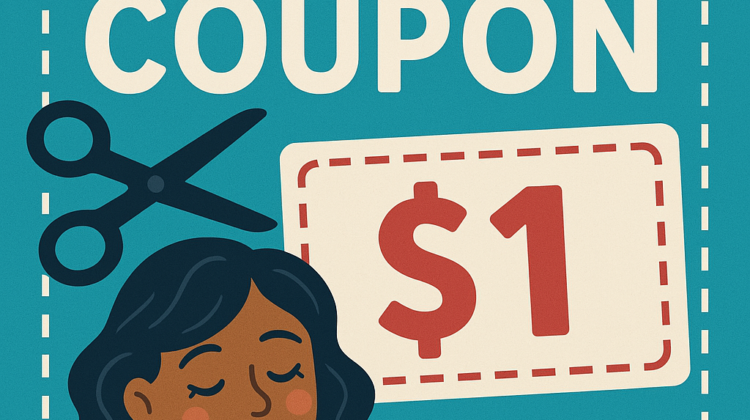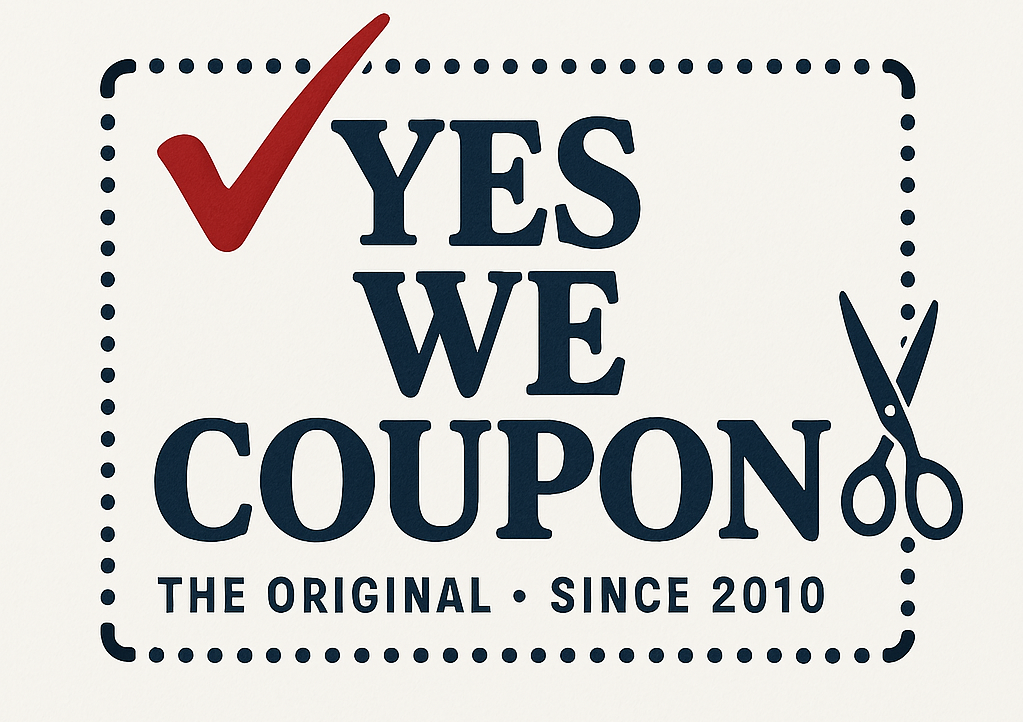
Let’s be honest: we all love saving money. And if you’ve ever watched those jaw-dropping extreme couponing shows or heard stories of people walking out of the store with carts full of groceries for pennies, you’ve probably wondered, How do they do it?
The good news? You don’t need to be extreme to make couponing work for you. With a little bit of strategy and some organization, you can start saving serious money on your everyday purchases — without spending hours each week. Whether you’re looking to shave a few dollars off your weekly grocery bill or stock up your pantry for less, this guide will help you get started.
Step 1: Understand the Basics of Couponing
First, let’s demystify some coupon lingo you’ll come across:
-
Manufacturer Coupons: These come from the brand or manufacturer (think P&G, Kellogg’s). They can usually be found in newspapers, product packaging, or online.
-
Store Coupons: Offered directly by the store (Target, Kroger, etc.) and can sometimes be stacked with manufacturer coupons for double the savings.
-
Digital Coupons: Coupons you “clip” online or in an app and use at checkout by scanning your phone or entering your loyalty number.
-
Catalinas: These are coupons that print at the register after your purchase, usually based on what you bought.
-
Rebates: Post-purchase cash-back offers through apps like Ibotta or Fetch.
Pro tip: Some stores let you stack a manufacturer coupon, a store coupon, and a rebate offer — triple savings!
Step 2: Gather Your Coupons
Now that you know what types of coupons are out there, let’s talk about where to find them:
-
Sunday Newspaper Inserts: Still one of the best sources for manufacturer coupons.
-
Coupon Websites: Check out Coupons.com, SmartSource, and RedPlum.
-
Store Apps: Download apps for your favorite stores. Target’s Circle program and CVS’s ExtraCare app are gold mines.
-
Manufacturer Websites: Go directly to brand websites and social media for exclusive coupons.
-
Cash-Back Apps: Apps like Ibotta, Fetch Rewards, Shopkick, and Rakuten let you earn money back on your purchases.
-
Email Newsletters: Subscribe to brands and stores for exclusive offers and coupons.
Step 3: Get Organized
Couponing can quickly become overwhelming if you’re not organized. Here’s how to keep it manageable:
-
Coupon Binder: Use clear plastic sleeves to sort coupons by category (dairy, snacks, household, etc.).
-
Accordion File: A portable option if you want to take your coupons to the store.
-
Digital Organization: Use note apps or dedicated coupon apps to track your digital coupons and rebates.
-
Expiration Dates: Regularly check expiration dates and purge expired coupons weekly.
Step 4: Learn Store Policies
This is where you’ll gain an edge. Every store has its own coupon policy, and knowing it can help you maximize savings.
Look for:
-
Doubling Policies: Some stores double manufacturer coupons up to a certain value.
-
Stacking Rules: Find out if you can stack store and manufacturer coupons.
-
Price Matching: Some stores will match competitor pricing.
-
Rain Checks: If a sale item is out of stock, ask if you can get a rain check to buy it later at the sale price.
Print or screenshot store policies to keep handy in case you need to reference them at checkout.
Step 5: Start Small & Track Your Savings
When you’re just starting out, don’t aim to coupon like a pro right away. Focus on 1–2 stores, practice matching coupons with weekly sales, and track your progress.
Use a simple spreadsheet or notebook to log:
-
Date
-
Store
-
Original price
-
Coupons used
-
Final price
-
Savings %
Seeing your savings add up will keep you motivated!
Step 6: Time Your Purchases
Combining coupons with sales is the secret sauce. Most stores follow a sales cycle (usually 6–8 weeks), meaning items go on sale at regular intervals. Wait for sales to maximize coupon value.
Pro tip: Stockpile non-perishable essentials when they’re at their lowest price to avoid paying full price later.
Step 7: Be Ethical & Patient
Lastly, remember: ethical couponing is sustainable couponing.
-
Follow the rules: Only use coupons as intended (no photocopies or fraudulent stacking).
-
Be respectful: Don’t clear shelves; leave some deals for others.
-
Be patient: Couponing is a skill that improves over time. Mistakes will happen, and that’s okay!
Final Thoughts
Couponing isn’t just for the pros — it’s for anyone who wants to stretch their budget further. With a little effort upfront and a system that works for you, you’ll be amazed at how much you can save. Start small, stay organized, and celebrate every win, no matter how big or small.
Happy couponing — and happy saving!
Bonus Tip: Want to go even deeper? Join couponing communities on Facebook, Reddit, or YouTube. You’ll get real-time deal alerts, store-specific hacks, and motivation from fellow savers!
Paper vs. Digital Coupons: Complete Guide for Beginners in the U.S.
If you’ve ever wanted to start couponing in the United States but felt overwhelmed by all the options, you’re not alone. From old-school newspaper clippings to modern app-based savings, couponing today comes in many forms. But here’s the good news: anyone can do it, and you don’t have to be an extreme couponer to enjoy meaningful savings.
In this guide, we’ll break down both paper coupons and digital coupons, explain how they work, show you real-world examples, and help you understand the benefits and limitations of each. By the end, you’ll know exactly how to start saving money confidently — no stress!
What Are Paper Coupons?
Paper coupons are physical vouchers that give you discounts on specific products or purchases. These are the traditional coupons you clip out and hand over at checkout. They’ve been around for decades and still remain a powerful tool for smart shoppers.
Where to Find Paper Coupons
-
Sunday Newspaper Inserts: Many manufacturers still include high-value coupons in Sunday papers. Look out for names like SmartSource or Save. You simply cut out the coupons you want and take them to the store.
-
Store Flyers and Circulars: Weekly ads from stores like Walgreens, CVS, and grocery chains often include store-specific coupons. These are usually valid only at that specific store.
-
Manufacturer Mailers: Some brands mail coupons directly to loyal customers or people who sign up for their newsletters.
-
Tear Pads and Peelies: These are found in-store. Tear pads are placed near products on the shelf, while peelies are stickers attached right to the product packaging.
-
Catalina Coupons: Printed at the register after you make a purchase, often based on what you just bought. These are great for future savings!
How Paper Coupons Work
At checkout, simply hand your coupons to the cashier. They’ll scan the barcode, and the discount will apply instantly. Paper coupons always include details like:
-
Expiration dates
-
Product requirements (size, flavor, quantity)
-
Usage limits (e.g., “limit 1 per transaction”)
Example of a Paper Coupon
Save $1.00 on Any ONE Brand X Laundry Detergent (excludes trial sizes). Expiration: 06/30/2025. Limit 1 coupon per purchase.
You cut this out from a newspaper or flyer, and at the store, when you buy Brand X detergent, you hand it over to the cashier. Easy!
What Are Digital Coupons?
Digital coupons are virtual discounts you save on your smartphone or computer. No scissors needed! They are linked to your store loyalty account or mobile device and automatically apply at checkout when you buy the qualifying item.
Where to Find Digital Coupons
-
Retailer Apps: Stores like Target, CVS, Walgreens, Kroger, and Walmart all have apps filled with digital coupons you can clip.
-
Manufacturer Websites: Brands often offer printable or digital coupons directly on their sites.
-
Cashback Apps: Apps like Ibotta, Fetch Rewards, and Checkout 51 let you earn cash back or points by scanning your receipt or linking your loyalty card.
-
Email and Text Subscriptions: Brands and stores often send exclusive digital coupons to subscribers.
How Digital Coupons Work
-
Clip the Coupon: Use the store app or website to browse and clip coupons to your account.
-
Shop: Buy the qualifying item.
-
Redeem: At checkout, scan your loyalty card, app barcode, or enter your phone number. The discount applies automatically!
Example of a Digital Coupon
Save $2.00 on Tide Pods (12-count or larger). Clip offer in the Target app. Valid through 06/30/2025. One-time use.
You open the Target app, clip the offer to your account, and at checkout, you scan your app or enter your phone number. The $2.00 discount is applied automatically.
Paper vs. Digital Coupons: Which Should You Use?
Both types have their strengths! Let’s compare:
| Feature | Paper Coupons | Digital Coupons |
|---|---|---|
| Availability | Found in newspapers, mailers, in-store | Found in apps, websites, and emails |
| Ease of Use | Must bring physically to the store | Stored in app, applies automatically |
| Stacking Deals | Can often combine with store coupons | Can sometimes stack, but depends on store policy |
| Expiration Management | Must check dates manually | App usually tracks expiration for you |
| Multiple Uses | If you have multiple copies, you can use more than once | Typically limited to one use per account |
| Great For | Stocking up on multiple items, sales events | Quick savings, everyday shopping, no printing or clipping needed |
Pro Tips for Using Both
-
Combine Paper & Digital: Some stores allow you to stack a manufacturer coupon (paper) with a store digital coupon. Double the savings!
-
Clip Digital Coupons Before Shopping: Many apps require you to clip offers in advance for them to apply at checkout.
-
Organize Paper Coupons: Use a coupon binder or envelope system so you’re not fumbling at the register.
-
Use Rebate Apps: Apps like Ibotta and Fetch work even after you checkout! Snap a picture of your receipt and earn extra cashback or points.
-
Check Store Policies: Some stores have specific rules about combining coupons. Knowing these in advance saves time and prevents surprises at checkout.
Final Thoughts
Both paper and digital coupons can save you serious money — it just depends on your shopping style. If you love the feeling of clipping coupons and planning big shopping trips, paper coupons are for you. If you prefer a faster, tech-savvy approach, go digital. And honestly? The smartest shoppers use both!
No matter which route you take, the goal is the same: save money and stretch your budget further. Start with the methods that feel easiest for you, and as you get comfortable, explore others. Before long, you’ll be stacking savings like a pro!
